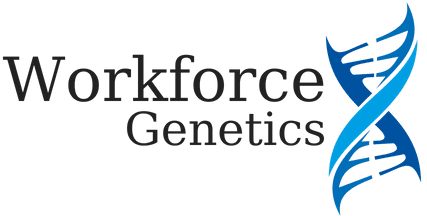
Breaking into the Biotech and Pharma Industry: Advice from a Recruiter

Are you looking to work in the biotech and pharmaceutical industry? Jeff Caskey, a senior life science talent consultant at Workforce Genetics was recently a featured speaker for Johns Hopkins University where he offered practical advice for breaking into the industry.
In his presentation titled “A Recruiter’s Guide to Transitioning into the Biotech and Pharma Industry,” Caskey outlines the importance of building a search plan and creating your brand and focuses on ways to execute your job search and to get the interview.
In this two-part blog series, we go into depth about each of the steps you should take to get the job, as each is pertinent, starting with building a search plan.
Building a Search Plan
Get introspective, and ask yourself a trifecta of questions to understand your strengths and interests. “To have a successful career, it has to be something you’re passionate about,” says Caskey. “This is what differentiates a job from a career.” Start by asking yourself these questions to get clear on what you’re searching for:
What do you like?
For example, do you like to manage projects or programs? Do you enjoy mentoring? Project or program manager roles could be an option then. If you’re into the discovery of science and problem solving, then research may be the avenue for you.
What are you good at?
Examine your skills; where does your education and work experience lie? Understanding what you bring to the table is important, and should also be a part of your brand. Access myIDP, a free online resource, to help you hone in on your skills and career goals.
What will people pay you for?
Search for roles you’re interested in that require your expertise and skills, and most importantly, your passions.
Taking into Account the Location & Size of the Company
During your job search, you may notice that most biotech, pharmaceuticals, biopharmaceutical, and life science companies are located in major metropolitan areas. Caskey explains that, if you don’t reside in a major hub, then relocation is often a must, and communicating your willingness to do so will appeal to an employer.
Recruiters of startup businesses will also be keen on hiring someone willing to juggle many tasks as the businesses continue to grow. Roles are likely less siloed as startups tend to require all hands on deck in early stages. In conversation with a recruiter, highlight past experiences of juggling tasks to become an attractive candidate. Startups are a great place to start a career as it means you will wear many hats, and you get to put your thumbprint on the business, Caskey remarks.
In addition to employment at startups, roles at contract organizations, which serve the many needs of biotech companies via outsourced services, are also valuable opportunities for those without industry experience. They typically allow entry-level employees to work on specific projects or programs for various clients.
Mid-sized organizations and larger pharmaceutical corporations are great places to work for career development and the ability to refine your skills in a specialized role on a specific track. Because of the abundance of roles, it may be easier to switch gears if there is another area of the business in which you wish to work. Larger companies are also more likely to provide sponsorships for international students.
Once you decide the location and size of the company you wish to work for, use LinkedIn or other job search engines to filter these desires. Follow at least 10 to 15 relevant businesses, and ensure you sign up for job alerts through their social media accounts and/or websites.
Building your Brand
Your brand is what differentiates you from the many other candidates trying to break into the industry. What is your story? Create a narrative that briefly describes your interests, expertise, and career goals, and consistently promote this narrative on LinkedIn, other social media accounts, your website, and your resume.
One place to heavily focus your time is in optimizing your LinkedIn account, which is considered a recruiter’s number one tool, Caskey shares. Complete your profile by adding more than just your jobs, education, skills, publications, and recommendations; also include the following items, which appear at the top half of your LinkedIn page:
- a profile photo
- a headline
- keywords and
- the “open to work” status for recruiters to see.
Additionally, it is attractive to hiring managers that potential candidates share content relevant to the industry.
Connecting with a company’s hiring manager and employees with a role you’re seeking may also be effective. Start a conversation with these connections; ask them how they broke into the industry, what they believe it takes to be a successful candidate, and about the recruiters they used, for example.
Avoid directly asking for a job, and use the conversation solely as an information-seeking opportunity. Always express your appreciation afterwards. See below for an example of a message to send to your LinkedIn connection below.
By following the above steps, you put yourself in a great place in becoming a top candidate for your future career in biotech and pharmaceuticals. Understand your skills and interests, take this knowledge to build an enticing brand, and promote it through your LinkedIn and in conversations with new connections. In the next blog, we offer tips on searching for jobs, improving your resume and getting the interview.
To watch the entire event, click play below.

About Workforce Genetics
Workforce Genetics is a talent attraction and acquisition company focused on workforce solutions and employer branding for life science companies in the BioHealth Capital Region and Philadelphia metro area. Search through current industry job opportunities and get in touch with a recruiter to discuss career opportunities.



